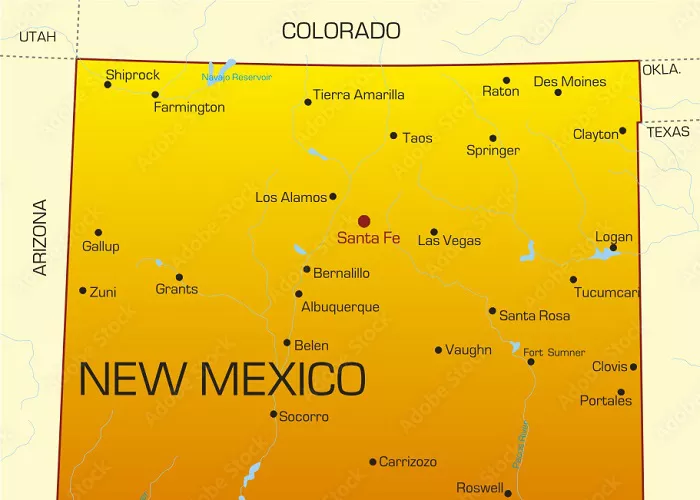New Mexico, known as the “Land of Enchantment,” is a state rich in culture, history, and natural beauty. But what color is New Mexico on the map? Most USA maps depict it in a warm yellow or tan shade, reflecting its desert landscapes. However, the state’s true “color” goes beyond cartography—it’s shaped by geography, climate, culture, and more. Let’s explore New Mexico from multiple angles.
Geographical Location
New Mexico is in the southwestern United States, bordered by Colorado, Arizona, Texas, and Mexico. Its central location makes it a crossroads of cultures and landscapes. On a world map, it appears as part of the arid Southwest, often colored in earth tones.
Water Bodies
Despite its dry reputation, New Mexico has key rivers like the Rio Grande, which supports agriculture and cities. Lakes such as Elephant Butte Reservoir provide water for irrigation and recreation. These blue waterways contrast with the state’s dominant desert hues.
Climate
New Mexico has a varied climate—arid deserts in the south, snowy mountains in the north. Summers are hot, while winters can be cold, especially at higher elevations. This diversity affects how the state is perceived, from golden deserts to white-capped peaks.
Topography
The state’s terrain ranges from flat deserts to the rugged Rocky Mountains. The Sangre de Cristo Mountains in the north are a stunning backdrop, while the White Sands National Park dazzles with its gypsum dunes. These features add “layers” of color to New Mexico’s map.
Geology
New Mexico’s geology is colorful in a literal sense—red rock formations, black lava flows, and multicolored mineral deposits. The state has rich deposits of copper, turquoise, and uranium, contributing to its economic and visual identity.
Natural Environment
From dense forests to barren deserts, New Mexico’s ecosystems are diverse. The Gila Wilderness, one of America’s first protected wilderness areas, showcases lush greenery, while the Chihuahuan Desert represents stark, sunbaked landscapes.
History
New Mexico’s history is a blend of Native American, Spanish, and Anglo influences. Ancient Puebloan ruins, Spanish missions, and Wild West towns all add historical “shades” to the state. This rich past is reflected in its architecture and traditions.
Culture
The state’s culture is vibrant, with Native American pottery, Hispanic folk art, and modern influences. Santa Fe’s adobe buildings, painted in earthy tones, define its aesthetic. Festivals like the Albuquerque International Balloon Fiesta add bursts of color to the skies.
Economy
New Mexico’s economy relies on oil, gas, tourism, and federal research labs like Los Alamos. While energy production dominates, the creative arts and outdoor recreation also contribute significantly, painting a diverse economic picture.
Ecology
Conservation efforts protect species like the Mexican gray wolf and pronghorn antelope. Climate change poses challenges, but initiatives like reforestation and water management aim to preserve the state’s natural beauty.
Population
New Mexico is one of the most ethnically diverse states, with a large Hispanic and Native American population. Cities like Albuquerque and Santa Fe blend modern living with traditional cultures, creating a dynamic social landscape.
Conclusion
So, what color is New Mexico on the map? Cartographers may use yellow or tan, but the state’s true palette is far richer—red rocks, blue skies, white sands, and green forests. Its geography, history, and culture combine to create a land of endless hues. Whether you’re studying a USA map or visiting in person, New Mexico’s colors will leave a lasting impression.

